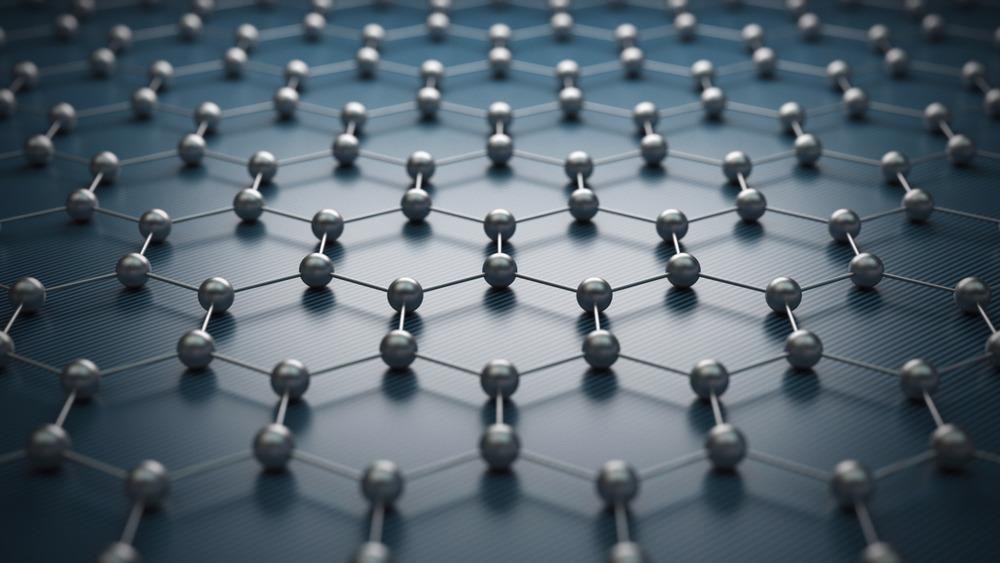Recently, researchers at Dalian University of Technology, China have developed an electric-field triggered graphene production method known as electrochemical exfoliation. Published in the journal Accounts of Material Research, the team investigate electrochemical techniques of graphene production that show promise and potential to meet the requirements of green, sustainable development.

Study: Electric-Field-Triggered Graphene Production: From Fundamental Energy Applications to Perspectives. Image Credit: koya979/Shutterstock.com
Since its initial discovery back in 2004, the so-called wonder material, graphene, an allotrope of carbon consisting of a single layer of atoms tightly bound in a two-dimensional honeycomb lattice structure has captured the imagination of researchers and scientists across the globe.
Owing to its high thermal conductivity, large carrier mobility at room temperature, high catalytic performance, and stable mechanical properties, graphene has transformed research and development in several fields including biomedicine, electronics, energy storage, materials science, sensors, and many more.
“Electric-field triggered graphene production is a potentially scalable method because of its simple and convenient operation, cost-effectiveness, environmental friendliness, and high exfoliating efficiency,” explains co-author of a new study, professor Jieshan Qiu.
Exfoliation Methods
Driving graphene production towards industrial-scale applications requires coordinated efforts but if successful refining the production process could revolutionize areas such as energy storage, sensors, electronics, and biomedical technologies.
“The size, thickness, and content of surface functional groups of electrochemically exfoliated graphene (EEG) are adjustable, which will broaden the application of graphene in energy storage/conversion and other fields,” says Qiu.
There are various exfoliation methods that Qiu and his team analyzed that can effectively produce graphene, as such the derivative electrochemical exfoliation method can be divided into anodic exfoliation, cathodic exfoliation, and dual-electrode exfoliation.
Thickness of Graphene Oxide Layers Influenced by the Content of Oxygen Functional Groups
Accordingly, different methods mean that the properties of graphene can also be modulated including the defect density, number of layers, and yield. Anodic exfoliation is the most common electrochemical method as a result of its high exfoliation efficiency which produces graphene yields in a relatively small period of time.
For the graphene preparation the multifarious raw materials (graphite rod, graphite foil, graphite powder, coke, coal, etc.) were employed as electrodes for electrochemical exfoliation, the researchers also evaluated the corresponding function and properties of each.
In addition to graphene, the electric-field triggered exfoliation technique could also be applied for the production of other promising products such as carbon quantum dots (CQDs), graphene quantum dots (GQDs), and single-atom catalysts (SACs).
Electrochemically Exfoliated Graphene
Graphene is constantly finding new application areas and researchers are looking into ways the material can be used to improve energy storage and generation, as well as in electronics and sensor applications.
“EEG is a promising material that exhibits enormous superiority and competitiveness in the energy storage/conversion fields,” states Qiu. Graphene is also preferred for use in miniaturized energy storage devices due to its high flexibility characteristics, including bendable, foldable, and stretchable features.
The usage of graphene in energy storage has been researched and emphasized through the use of graphene in advanced electrodes. Applications that combine graphene and silicon nanoparticles have previously resulted in anodes that maintain 92% of their energy capacity over 300 charge-discharge cycles, with a high maximum capacity of 1500 mAh per gram of silicon. Energy density values that have been achieved are typically well above 400 Wh/kg.
One of the major challenges manufactures of electronic devices and energy storage systems face is thermal efficiency and heat generation during operation processes. One of the advantages of graphene is that its high thermal conductivity can avoid heat accumulation and preserve both the efficiency and safety of devices.
Additionally, the oxygen-enriched properties displayed in EEG allow it to be used as a binder, and graphene/polymer composites are suitable materials for use in biomedicine applications and can also act as conductive agents and fireproof coatings.
With the great potential that graphene offers developing large-scale production methods that are also sustainable is deemed a necessary and urgent requirement by Qiu and his team to broaden the scope and practical applications for EEG.
References & Further Reading
Wenbin Li, Chang Yu, Xinyi Tan, Zhao Wang, and Jieshan Qiu. ‘Electric-Field-Triggered Graphene Production: From Fundamental Energy Applications to Perspectives’. Accounts of Materials Research. Article ASAP DOI: 10.1021/accountsmr.1c00211 https://pubs.acs.org/doi/10.1021/accountsmr.1c00211
de la Fuente, Jesus. ‘Understanding Graphene’. Graphena. [https://www.graphenea.com/pages/graphene#.YdacAxPML0o].
Disclaimer: The views expressed here are those of the author expressed in their private capacity and do not necessarily represent the views of AZoM.com Limited T/A AZoNetwork the owner and operator of this website. This disclaimer forms part of the Terms and conditions of use of this website.